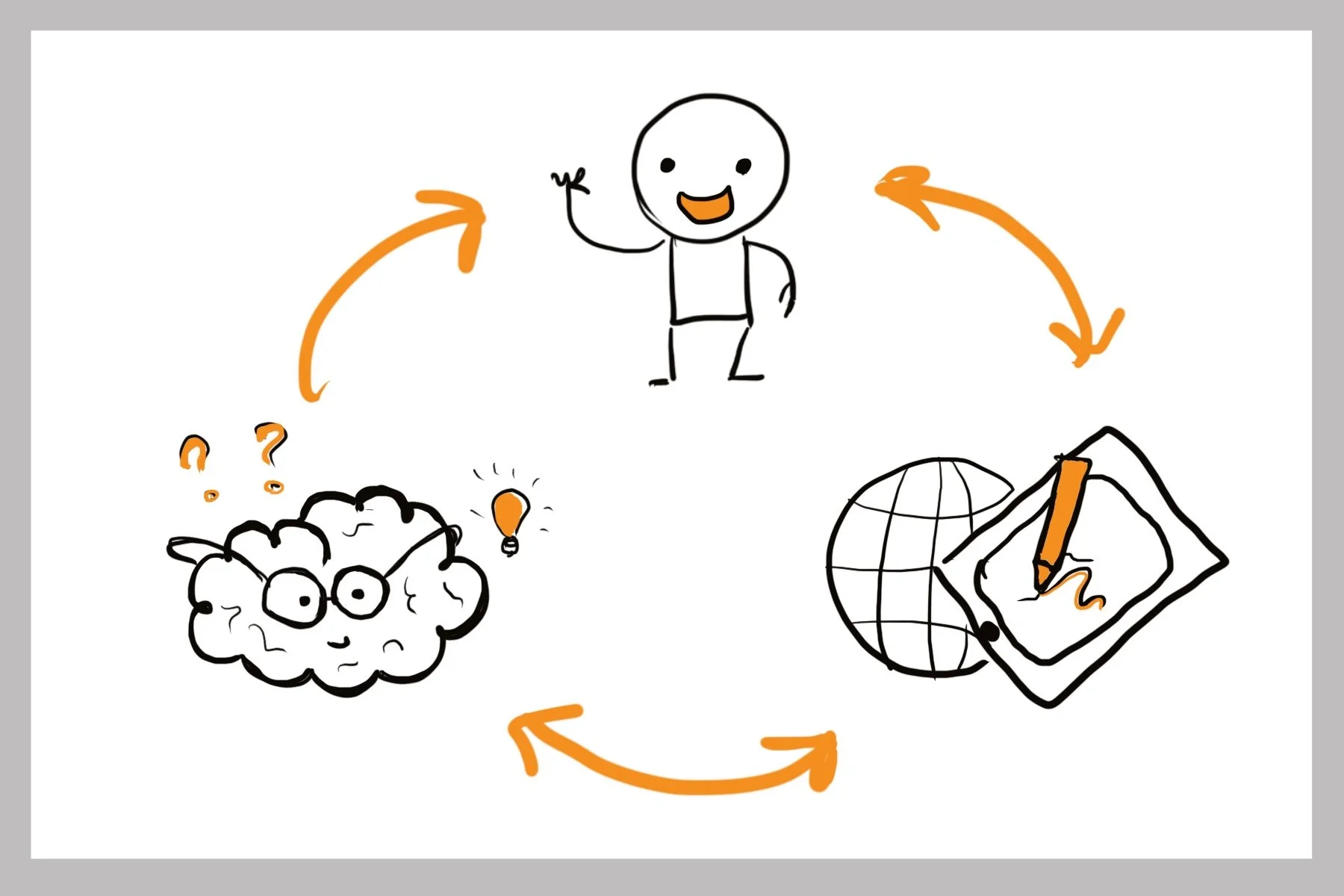Children, learning, technology relations
Recently, I've frequently been asked what I do. Interestingly, when you explain instructional design to people who don’t know anything about it, the explanation comes out much simpler and focused.
The short answer is that I write about children, learning experience, technology, parenting, and everything in between. I help designers create better learning experiences for children. I help parents raise confident learners who know how to responsibly use technology.
My goal is to help our children grow as learning beings, develop their mental, physical and emotional abilities, and strengthen their skills and confidence. To do that, children must learn how to learn, have the imagination and courage to dream big, and reverse engineer their learning journey toward achieving their goals. They need to own their decisions, follow the roadmap, deal with harsh realities, and persist forward. It’s a hell of a lot to ask from a child, but I believe it’s possible with practice.
How does technology fit in?
We live in a hybrid reality. I don’t need to tell you that technology is everywhere. Using technology and not being used by technology is a skill we all must practice.
Digital orientation in 2021 is absolutely essential. The content may vary based on age and familiarity with technology.
Having your management system of hybrid existence – how you think, how you research, how you organize or clean your environment, etc.
Practice independence – no app will help you manage your tasks if you can’t do it on paper. Apps won’t do it for you.
Know what you need and how to get it – how do you choose the “right” and necessary products? How do they serve your routines, habits and goals?
Shaping young minds
Technology has power. We, designers, have the power to shape the minds of young children with our products. Their minds are flexible and absorbent. The responsibility to do our job well is immense. We must build products that serve children.
Tristan Harris is leading a movement that’s redefining business models for tech companies that will be both profitable and beneficial for humanity (I will make a separate post in the near future).
Children - Learning - Technology relations
Let's look at how these relate to each other, and ask some questions. In the center of the Venn diagram is “Learning Experience”.
Children-Learning:
How do children learn naturally?
How do learning needs change as children get older?
What kind of adult assistance is needed for learning? And how much?
What scientific research has to offer in understanding children's learning?
What can children teach us about their learning needs?
Learning-Technology:
What is the role of technology in learning?
How does technology serve learning?
How does technology change learning?
What are the benefits of using technology in learning?
What are the dangers of using technology in learning?
How should we design technology for learning?
Technology-Children:
What is the role of technology in child development?
How do children actually use technology in their daily life?
What are the healthy online and offline habits for digital citizenship?
How can we design child-oriented technology (that uses children’s perspectives and conceptual models)?
Stay tuned…
ChildrenLX is a place to find answers and ask new questions, enriching the discussion about children, learning, and technology. This is the place to share thoughts, examples, and best practices.
Is there a question you’re interested in that isn’t on the list? If so, please share it with me.
Meanwhile, I’m off to find some answers!
